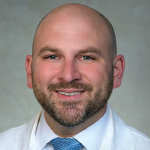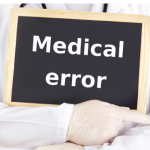I knew I shouldn’t look.
I was driving 60 miles per hour, heading north on I-95, trying to get to the George Washington Bridge before dusk.
It takes a certain fatalism to drive through New York City if you are not a native. Ninety percent of the drivers sharing the road with you know exactly where they are going, and their driving style reflects that. The New York City driver is fearless, routinely committing acts of high speed daring that are safe only because they have memorized the curve of the road. In New York, the broken white lines painted on the streets are a suggestion, not a command, and drivers will not hesitate to ignore that suggestion completely if they see a way to shave a second off of their commute.
I still think of myself as a New Yorker, but it has been years—decades, really—since I lived in New York full time. In the intervening time, my reflexes have slackened. Technically, I left New York to live in another city, but driving in Baltimore takes an entirely different skill set. In Baltimore, you learn to keep your eyes on the road and your hands on the wheel, ready to swerve around a pothole or a pedestrian. Driving in New York feels more like the final examination for an advanced defensive driving class run by a sadist.
Unfortunately, almost everyone I am related to in this world lives on the distal end of the George Washington Bridge, so I make this trip not infrequently. That said, I prefer to complete the bulk of the trip during daylight hours, so I am on familiar ground before I am blinded by the headlights of oncoming traffic.
The last time I made this trip, I glanced at my phone because I received a text. As I said, I knew I shouldn’t look, but it also occurred to me that it was a Friday afternoon. I probably only had a few hours before whoever was looking for me would disappear into their own weekend.
In this case, it was a radiologist. Never a good sign. I have never received a call from a radiologist just to let me know that the chest X-ray was clear. If a radiologist was reaching out, particularly on a Friday afternoon, it was probably important.
So I called the radiologist back. He just wanted to let me know that my patient had an aortic dissection.
Just?
I asked a number of follow-up questions, but if I am being honest, I was less interested in the answers and more just stalling for time. I had no idea who this patient was, and I hoped that if we kept talking, it might come to me.
Eventually, I realized the patient was a 50-something-year-old woman I had met during the prior month for a question of large vessel vasculitis. The answer was that she didn’t have vasculitis, but she did have something. She had brought her magnetic resonance angiogram with her, but the images—and the radiologist’s interpretation—were both fuzzy. After failing to decipher either, I decided it would be easier to have another test performed. I gave her a prescription for a computed tomography (CT) angiogram, with instructions to get the test whenever it was convenient.
Apparently, it was convenient on a Friday afternoon.
The radiologist wasn’t able to tell me much. The dissection was large, but there were no stigmata indicating whether it occurred the week before or in the previous month.
Using the language of patient care to guilt physicians into working even harder than we already do is dishonest, & medical administrators should come clean about this manipulative practice.
In other words, nothing on the CT indicated whether this could wait until Monday.
So I did what you would do. I pulled over at the nearest rest stop, got some fries and pulled out my laptop so I could look up my patient’s medical records. After speaking to her, the emergency department attending and the vascular surgeon on call, I got back on the road.
About a month later, I received an email with the subject line, “FY20 DOM Faculty Plan Compensation Update,” which stated the following:
The DOM (Department of Medicine) compensation model and productivity reports have so far focused on individual productivity as measured by RVUs compared to national benchmarks, but it has always been our goal to evolve the model to incorporate quality and citizenship metrics. Beginning July 1st, earning a full end of year bonus in the DOM will be contingent on maintaining timely clinical documentation, including closing outpatient encounters, completing discharge summaries and responding to documentation queries. … For each metric, you will see a short description of the compliance standard, your year to date percent compliance with the standard as well as your performance in the most recent month. Bonus performance will be conditional on your annual performance. For performance that meets the standards set by the DOM, you will see a green check mark.
It suddenly occurred to me that what I think of as excellent healthcare and what my employer thinks of as excellent healthcare are very different.
In Search of Excellence
What does it mean to deliver excellent healthcare? Why is it that pulling over to the side of the road on my way to New York to arrange for an urgent admission for a patient I met once doesn’t earn me a green checkmark?
Early in this century, the goals of healthcare began to shift. In the 20th century, the patient was seen as a passive recipient of medical care. In the 21st century, the patient became a co-equal partner. Instead of focusing on treatment of the illness, healthcare started to focus on the wants and needs of the individual patient.1
Although patient-centered care was billed as a revolutionary concept, the concept itself was not all that new. William Osler famously opined, “The good physician treats the disease. The great physician treats the person who has the disease.”2
In truth, the rubric patient-centered care likely became popular because it was supposed to save the healthcare system money. Recipients of patient-centered care, which emphasizes a team-based approach led by a primary care provider, have fewer emergency department visits, fewer hospitalization readmissions and lower healthcare resource utilization.3
If we know we should be delivering patient-centered care, why do we fail to do it so often? Physicians commonly fail our patients two ways: biomedical errors and contextual errors. A biomedical error is a failure to make the right decision based on the medical data. A contextual error is a failure to recognize how a patient’s individual circumstances affect what might be the right decision for that patient. It would be a biomedical error to continue to prescribe methotrexate for a patient who is developing a macrocytic anemia. It would be a contextual error to prescribe methotrexate for a patient who could not afford to purchase the pills.4
In one study, physicians were asked to evaluate an actor playing the role of a patient who was contemplating knee replacement surgery. From a biomedical perspective, there were no contraindications to surgery. Only about half the physicians asked enough questions to learn that, in this scenario, she was the sole caregiver for a child who had a terminal illness and did not understand that she would be in rehabilitation during his last weeks of life.5
Why are we so bad at identifying contextual errors? I suspect it is for the same reason that my staff acts like they can’t see me when I am trying to fix a jammed printer: We feel like we don’t have enough time to get involved. Many of my patients likely don’t realize their clinic appointment is the only time I have in my week that is carved out solely to deliver their care.
When I see a patient in clinic, after completing a history and physical, I turn to the patient and say “Sorry.” And then I turn away from the patient and toward the computer monitor. I start typing and clicking, renewing orders, arranging for infusions, reviewing lab tests and placing referrals. The patient does not need to bear witness to any of this, but I know that if I don’t accomplish these tasks while the patient is looking over my shoulder, they may not get done. I am, in essence, stealing time from the patient to provide them with patient care.
I don’t steal only from my patients; I also steal from myself. The clinic day never incorporates enough time for the mechanics of patient care, so I accomplish the balance of my work at night and on the occasional weekend. You do, too. I know this because you have no choice.
In The New York Times, Danielle Ofri, MD, a physician at Bellevue Hospital, New York, wrote an article you should read. It’s titled, “The Business of Health Care Depends on Exploiting Doctors and Nurses.” She wrote:
For most doctors and nurses, it is unthinkable to walk away without completing your work because dropping the ball could endanger your patients. I stop short of accusing the system of drawing up a premeditated business plan to manipulate medical professionalism into free labor. Rather, I see it as a result of administrative creep. One additional task after another is piled onto the clinical staff members, who can’t—and won’t—say no. Patients keep getting their medications and their surgeries and their office visits. From an administrative perspective, all seems to be purring along just fine. But it’s not fine.6
The solution may lie in one single fact: For every physician, there are 10 medical administrators. Over the next 10 years, medical administrator positions are expected to grow by 17%. Positions for physicians over the same period of time will grow by only 14%.7 The business of healthcare has become more important than the delivery of healthcare itself. If the growth in medical administrator positions could be made linear rather than exponential, the surplus funds could be used to pay for people who actually deliver healthcare, rather than pay for people who supervise others doing that important work.
When new duty-hour limits were imposed on trainees, we were often compared with pilots, who need to be well rested to safeguard the lives in their hands. What no one seems to mention is that when their shift is over, those same pilots just leave. They feel no responsibility to keep working until every passenger is safely home. When the repairs to my car are running late, my mechanic doesn’t take my car home with him and work on it after dinner. Nor would I expect him to. The expectation up until now has been that physicians should work until the work is done, without regard to time or compensation. This expectation is a vestige of the days when physicians acted in loco parentis, and as our specialty moves from parentalism toward patient-centered care, we should start to admit this expectation is just plain loco.
Perhaps surprisingly, I have every confidence this problem will eventually resolve itself. Medical students are already asking me about work-life balance. I have a feeling their generation will not meekly type away at their electronic medical record on a Saturday night.
The Silent Parts
In the meanwhile, we need to say the silent parts aloud. If an institution is truly, deeply committed to providing outstanding patient care, then it needs to give practicing physicians an adequate amount of time to provide such care. How much time would be easy enough to determine: Take the number of minutes I am logged into my electronic medical record and divide by the number of patients in my panel. Because my electronic medical record kicks me out after a few minutes of disuse—and because I don’t log into my electronic medical record recreationally—that statistic should be a reasonably accurate representation of the amount of time I spend delivering patient care.
I would guess this calculation will yield a number far greater than the length of an average clinic appointment.
If an institution is truly, deeply committed to providing outstanding patient care, it also needs to acknowledge that physicians cannot do this alone. Like many physicians, I also function as a nurse, a pharmacist, a counselor and a social worker. I have no training in any of these roles; I am sure I do them badly. But I do them because the healthcare system refuses to pay for the many allied health professionals who my patients need, are well trained in these areas and are eager to jump into the fray.
Innovative approaches are afoot. At Johns Hopkins Bayview Medical Center, Baltimore, the Aliki Initiative pays for additional hospitalists to absorb patients who otherwise would have been directed to the housestaff services.8 This provides trainees in internal medicine time to identify contextual errors and to get to know their patients in a way that would have been inconceivable when I trained.
At Allegheny Health Network in western Pennsylvania, Sue Manzi is pioneering a sort of patient-centered home for rheumatic diseases, in which every patient is assigned to a multidisciplinary team and may interact with a physician, a pharmacist, a nurse or a social worker, depending on the issue and the team member’s field of expertise.
Both of these initiatives recognize that to deliver truly excellent patient care, we need more time, and that time should not have to be stolen from other pursuits that allow us to rejuvenate and make us whole.
We also need to be more honest about the business of patient care. I accept, intellectually, that I have to perform some paramedical tasks to justify my salary, but administrators should not be allowed to claim they are asking me to perform tasks like signing my notes quickly because “it is important for patient care.” I have never seen a patient who died of an unsigned note. Using the language of patient care to guilt physicians into working even harder than we already do is dishonest, and medical administrators should come clean about this manipulative practice.
In the meanwhile, I feel like I have a pretty good idea of what my job is. And I plan on continuing to prioritize that job, even if my employer and I have different opinions on what that job is. Because I know why I became a doctor, and it wasn’t to earn a green checkmark.
 Philip Seo, MD, MHS, is an associate professor of medicine at the Johns Hopkins University School of Medicine, Baltimore. He is director of both the Johns Hopkins Vasculitis Center and the Johns Hopkins Rheumatology Fellowship Program.
Philip Seo, MD, MHS, is an associate professor of medicine at the Johns Hopkins University School of Medicine, Baltimore. He is director of both the Johns Hopkins Vasculitis Center and the Johns Hopkins Rheumatology Fellowship Program.
Staff News
On Sept. 27, 2017, I reached out to Paul Monach, MD, to ask him to become the associate editor of The Rheumatologist. At the time, he was the director of the Boston University Vasculitis Center, and although it may seem less than ideal to have two vasculitis specialists helming this publication, I knew Paul had a background in basic and translational science that I lacked. I also knew that he enjoyed language and liked to write, and I suspected he would be a useful foil when my own writing went off the rails.
It turns out that I was correct on both accounts. Although you may not have known this, Paul’s fingerprints have been on every edition of The Rheumatologist that has been published since I became its medical editor. Paul always had fresh new ideas and a new perspective, and made this publication much better than it would have been otherwise.
I wrote today that physicians should not have to steal time “from other pursuits that allow us to rejuvenate and make us whole.” In this spirit, Paul has taken steps to improve his work-life balance, first by leaving his old position at Boston University for new ones at the VA and Brigham and Women’s Hospital, and now, sadly, by resigning his position at The Rheumatologist. I want to thank him, personally and publicly, for his help keeping The Rheumatologist running when I was getting my bearings and wish him nothing but the best in the years ahead.

Ethan Craig, MD, MHS
I am pleased to announce that Ethan Craig, MD, MHS, will become our new associate editor of The Rheumatologist. Ethan trained in internal medicine at the University of Minnesota and in rheumatology at Johns Hopkins. He is now an assistant professor of clinical medicine in the University of Pennsylvania’s Division of Rheumatology and is a staff rheumatologist for the Corporal Michael J. Crescenz VA Medical Center. His passion has been for advocacy—he is a member of the ACR’s Government Affairs Committee (GAC) and serves as the liaison between the GAC and the Insurance Subcommittee of the Committee for Rheumatologic Care. Up to this point, we have not had expertise in any of these areas on our editorial board, and we look forward to Ethan taking us in some exciting new directions!
References
- Institute of Medicine. Committee on Quality of Health Care in America. Crossing the Quality Chasm: A New Health System for the 21st Century. Washington, D.C: National Academy Press; 2001.
- Mambu J. Restoring the art of medicine. Am J Med. 2017 Dec;130(12):1340–1341.
- Bertakis KD, Azari R. Patient-centered care is associated with decreased health care utilization. J Am Board Fam Med. 2011 May–June;24(3):229–239.
- Weiner SJ, Schwartz A. Contextual errors in medical decision making: Overlooked and understudied. Acad Med. 2016 May;91(5):657–662.
- Weiner SJ, Schwartz A, Weaver F, et al. Contextual errors and failures in individualizing patient care: A multicenter study. Ann Intern Med. 2010 Jul 20;153(2):69–75.
- Ofri D. The business of health care depends on exploiting doctors and nurses. The New York Times. 2019 Jun 8.
- Medical administrator: Salary and career information.
- Celebrating 10 years of the Aliki Initiative. Johns Hopkins Center for Innovative Medicine.



